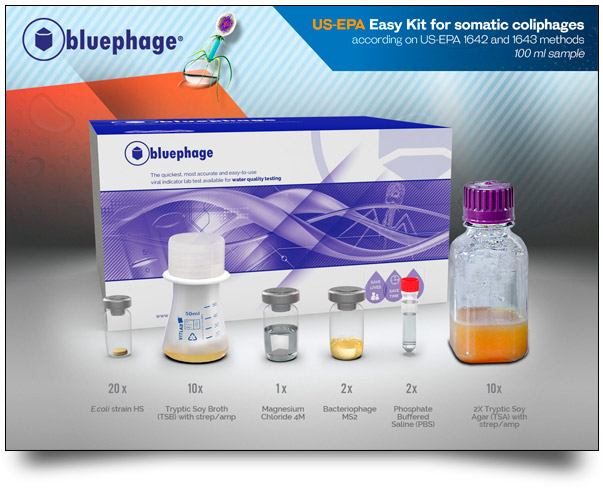BLOG | Bluephage
Can groundwater be microbiologically contaminated?

Groundwater from deep, confined aquifers is the water source least susceptible to contamination by human pathogens. However, fecal indicator pathogens associated with humans may be present in groundwater in measurable numbers.
Groundwater accounts for about 30% of the world’s freshwater. Of the other 70%, almost 69% is found in the polar ice caps and mountain snow/glaciers, and only 1% is found in rivers and lakes. Thus, groundwater accounts for an average of one-third of the freshwater consumed by humans, but this percentage can be as high as 100% in some parts of the world.
Groundwater is the water that runs between cracks and spaces in the soil, sand, and rock. It is stored and moves through geological formations called aquifers.
Aquifers usually consist of gravel, sand, sandstone, or fractured rock, such as limestone, and water moves between these materials through the large connected spaces that make them permeable.
Groundwater can be found almost everywhere, and groundwater supplies are replenished or recharged by rain and snowmelt seeping into cracks and crevices beneath the earth’s surface.
Groundwater is an essential natural resource and plays a significant role in the economy. For example, it is the primary source of water for irrigation and the food industry.
In general, groundwater is a reliable water source for agriculture, and worldwide, irrigation accounts for more than 70% of total water withdrawals (both surface and groundwater).
It is estimated that groundwater is used for about 43% of total irrigation water use. In some areas of the world, people face severe water shortages because groundwater is being used faster than it is naturally replenished. In other areas, groundwater is polluted by human activities.
In areas where the material above the aquifer is permeable, contaminants can quickly sink into groundwater supplies. Groundwater can be contaminated by landfills, septic tanks, leaking subway gas tanks, and excessive fertilizers and pesticides. If groundwater becomes contaminated, it will no longer be safe for drinking.
But contaminated groundwater is less visible and more difficult to clean up than contamination of rivers and lakes. Groundwater contamination often results from improper disposal of waste into the ground.
Aquifers that provide sustainable fresh groundwater to urban areas and agricultural irrigation are usually close to the ground surface (within a couple of hundred meters) and have some freshwater recharge. This recharge usually comes from rivers or meteoric water (precipitation) percolating into the aquifer through the overlying unsaturated materials.
Microbiological contamination of groundwater.
Pathogens, such as viruses, are much smaller than bacteria and protozoa, and many of them can reach groundwater through porous soil matrices.
Groundwater has traditionally been considered the water source least susceptible to contamination by indicator bacteria or human pathogens. This is true for groundwater from deep, confined aquifers. However, suppose fecal indicator pathogens commonly associated with humans are present in groundwater in measurable numbers. In that case, there is most likely a close connection to a contaminated surface environment, such as seepage from a waste lagoon or contaminated surface water, or a subsurface source of contamination such as a septic tank, a broken or leaking sewer line, or an old or poorly designed landfill.
Two groups of bacteriophages that infect Escherichia coli, somatic coliphages and F-specific coliphages, have been used in academia as fecal and viral indicators in all types of waters and groundwater. Regulatory authorities around the world are beginning to consider coliphages as indicators of water quality in many settings. In the United States, the National Primary Drinking Water Regulations: Ground Water Rule mandates monitoring for coliphages to ensure drinking water safety.
The Bluephage product portfolio offers solutions for fast, safe, and effective detection of coliphages in groundwater according to ISO and US-EPA methods.
Get to know the Bluephage Easy Kits, an all-in-one, and ready-to-use solution to facilitate your team’s work in the laboratory.
Read more about international regulations on coliphages.


